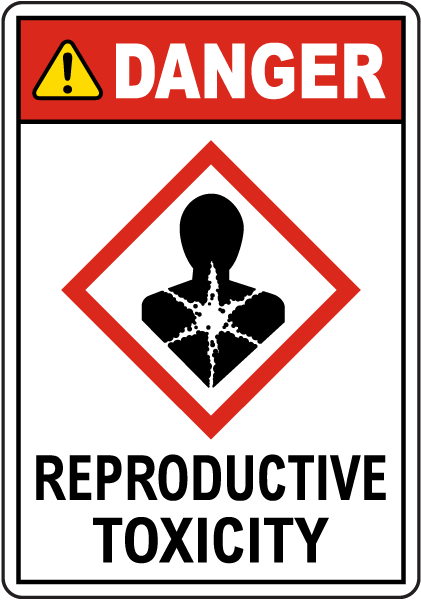Toxics, Free Full-Text
Por um escritor misterioso
Last updated 08 abril 2025

Industrial advances have led to generation of multi-component chemicals, materials and pharmaceuticals which are directly or indirectly affecting the environment. Although toxicity data are available for individual chemicals, generally there is no toxicity data of chemical mixtures. Most importantly, the nature of toxicity of these studied mixtures is completely different to the single components, which makes the toxicity evaluation of mixtures more critical and challenging. Interactions of individual chemicals in a mixture can result in multifaceted and considerable deviations in the apparent properties of its ingredients. It results in synergistic or antagonistic effects as opposed to the ideal case of additive behavior i.e., concentration addition (CA) and independent action (IA). The CA and IA are leading models for the assessment of joint activity supported by pharmacology literature. Animal models for toxicity testing are time- and money-consuming as well as unethical. Thus, computational approaches are already proven efficient alternatives for assessing the toxicity of chemicals by regulatory authorities followed by industries. In silico methods are capable of predicting toxicity, prioritizing chemicals, identifying risk and assessing, followed by managing, the risk. In many cases, the mechanism behind the toxicity from species to species can be understood by in silico methods. Until today most of the computational approaches have been employed for single chemical’s toxicity. Thus, only a handful of works in the literature and methods are available for a mixture’s toxicity prediction employing computational or in silico approaches. Therefore, the present review explains the importance of evaluation of a mixture’s toxicity, the role of computational approaches to assess the toxicity, followed by types of in silico methods. Additionally, successful application of in silico tools in a mixture’s toxicity predictions is explained in detail. Finally, future avenues towards the role and application of computational approaches in a mixture’s toxicity are discussed.

Toxic-Free Future Science, Advocacy, Results

Novel cross-linking of toxic-free biopolymers for cellulose-gelatin films from avocado seed waste - ScienceDirect

Featured – Plastic and Toxic Free Period

Toxic Free Crop – HomesteadCollective

TOXIC THURSDAY Template
I like my people like I like my candles, NONTOXIC! , Straight to the point with these extremely soft and comfortable shirts. , BELLA+CANVAS uses

Toxic Free Tee

Guide: Break Free Deal With and Heal From Toxic Family

Toxics, Free Full-Text

Free Twitch Text Emotes - Improve Audience Participation

IPEN EEB briefing: full disclosure of chemicals in products - EEB - The European Environmental Bureau

Toxic Mixtures in Time—The Sequence Makes the Poison
Recomendado para você
-
 What toxicity types are there?08 abril 2025
What toxicity types are there?08 abril 2025 -
 The banality of online toxicity08 abril 2025
The banality of online toxicity08 abril 2025 -
Toxicity - So. Cal's Tribute to System of a Down08 abril 2025
-
 Danger Reproductive Toxicity GHS Sign08 abril 2025
Danger Reproductive Toxicity GHS Sign08 abril 2025 -
 Toxicity Reversal Agents (Video)08 abril 2025
Toxicity Reversal Agents (Video)08 abril 2025 -
 Acute Dermal Toxicity Department of Toxic Substances Control08 abril 2025
Acute Dermal Toxicity Department of Toxic Substances Control08 abril 2025 -
 Toxicity pathways. Toxicity pathways describe the processes by08 abril 2025
Toxicity pathways. Toxicity pathways describe the processes by08 abril 2025 -
 System Of A Down - Toxicity - Music08 abril 2025
System Of A Down - Toxicity - Music08 abril 2025 -
 Chronic Toxicity - an overview08 abril 2025
Chronic Toxicity - an overview08 abril 2025 -
 Evaluating different web applications to assess the toxicity of08 abril 2025
Evaluating different web applications to assess the toxicity of08 abril 2025
você pode gostar
-
 Compre Doflamingo Wear Glasses, Quixote Doflamingo Glasses, Donquixote Doflamingo Glasses - Sunglasses08 abril 2025
Compre Doflamingo Wear Glasses, Quixote Doflamingo Glasses, Donquixote Doflamingo Glasses - Sunglasses08 abril 2025 -
 Nintendo Life on X: Top 100 Best Nintendo Games Of All Time https08 abril 2025
Nintendo Life on X: Top 100 Best Nintendo Games Of All Time https08 abril 2025 -
![NEW CODE] This New Roblox Tower Defense Game is WILD! (RIP ASTD](https://i.ytimg.com/vi/Uba7tzRXXOM/maxresdefault.jpg) NEW CODE] This New Roblox Tower Defense Game is WILD! (RIP ASTD08 abril 2025
NEW CODE] This New Roblox Tower Defense Game is WILD! (RIP ASTD08 abril 2025 -
 Amazing World Of Gumball Season 3, darwin Watterson, gumball Watterson, Gumball, amazing World Of Gumball, Amazing, wiki, headgear, human Behavior, artwork08 abril 2025
Amazing World Of Gumball Season 3, darwin Watterson, gumball Watterson, Gumball, amazing World Of Gumball, Amazing, wiki, headgear, human Behavior, artwork08 abril 2025 -
 Alphabet Lore But It's Different Alphabets (KZ, GR, RU, KOR)08 abril 2025
Alphabet Lore But It's Different Alphabets (KZ, GR, RU, KOR)08 abril 2025 -
 Boston Celtics to rest Gordon Hayward on Saturday vs. New York08 abril 2025
Boston Celtics to rest Gordon Hayward on Saturday vs. New York08 abril 2025 -
 Why Transformers Recast Megatron After 3 Michael Bay Movies08 abril 2025
Why Transformers Recast Megatron After 3 Michael Bay Movies08 abril 2025 -
 Mundial Interclubes 2021 - Verdazzo08 abril 2025
Mundial Interclubes 2021 - Verdazzo08 abril 2025 -
 Pin de Meg Dittmar em pirate rp Coisas de pokemon, Personagens de anime, Desenhos de anime08 abril 2025
Pin de Meg Dittmar em pirate rp Coisas de pokemon, Personagens de anime, Desenhos de anime08 abril 2025 -
 Otakus Brasil 🍥 on X: A página do anime Boruto: Naruto Next Generations, já está disponível na Netflix Brasil. O anime estreia em 29 de janeiro com 3 temporadas. Link: /08 abril 2025
Otakus Brasil 🍥 on X: A página do anime Boruto: Naruto Next Generations, já está disponível na Netflix Brasil. O anime estreia em 29 de janeiro com 3 temporadas. Link: /08 abril 2025
